"Mother of Poltava victory" - the battle of Lesnaya
General Adam Ludwig Levengaupt (1659 - 1719) received the order of the Swedish king in Riga to move to his main forces with a large transport of combat and food supplies in early June of 1708. Therefore, the 16 thousand corps of Lewenhaupt with 17 guns was moving very slowly, it was composed of 7 thousands of wagons. In a month the hull passed no more than 230 km. 28 August and 4 September, the Swedish king sent orders indicating to speed up the march. 19-22 September (30 September - 3 October) Leuvengaupt forces crossed the Dnieper at Shklov and moved in the direction of Propoisk. There, the Swedish general planned to cross the river Sozh and in Chernihiv oblast to unite with the army of Charles.
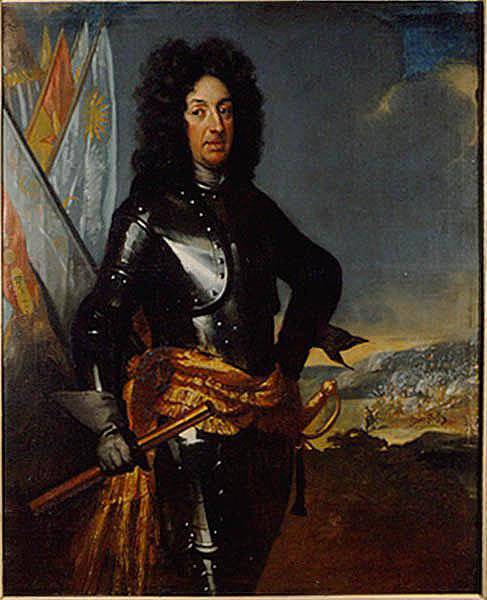
Adam Ludwig Levengaupt.
Naturally, the Russian command appreciated the opportunity to crush a separate Swedish corps. According to Russian intelligence, it was 8 - 15 thousand people. The Russian Tsar instructed Sheremetev to follow the main Swedish forces, and he himself led the flying corps (corolant), which was to fight against the forces of Levengaupt. The 12 thous. Corvolant included 6,8 ths dragoons (10 dragoon regiments), 4,9 ths. Equestrian infantry (10 battalions), several hundred Cossacks and 30 field guns. Accurate information about the location of the corps of Levengaupt from the Russian command was not. The spy sent by the Swedes told the corolant headquarters that Levengaupt’s forces are still far beyond the Dnieper and are about to cross at Orsha. The Russian corps went to Orsha, but already at the time of the crossing, news was received that Swedish troops had crossed from Shklov and from there they were going to Propoisk. The crossing of the Russian army was immediately interrupted, and the flying corps moved along the left bank of the Dnieper after the Swedes. A Menshikov detachment was sent for reconnaissance. The main forces marched in a forced march to block the way to the Swedes. On September 24, the Menshikov squad discovered the enemy and said that the Swedes had more strength than they thought. Peter was not embarrassed by this factor, he ordered 4, thousands of Bour's detachment (located at Cherikov) to join up with his corps and occupied the village of Long Moss. It was decided to wait for Bour for no more than two days, and then attack the Swedes. It was the right step - with good luck, Karl was hit hard, and if the operation failed, the flying corps could easily retreat, Levengaupt cramped by a huge wagon train would not be able to pursue Russian forces.
The Swedes managed to cross over to the right bank of the Restra River and destroy the bridges. Batteries were installed at coastal heights to keep the possible crossing points going. This did not allow the Russian corps to force a water barrier on the move. At this time - by the evening of September 27, Levengaupt was able to transport the avant-garde and the most part of the convoy - 3 thousand of the wagons to Propoisk 4. Then the main forces of the Swedes withdrew to the village of Forest.
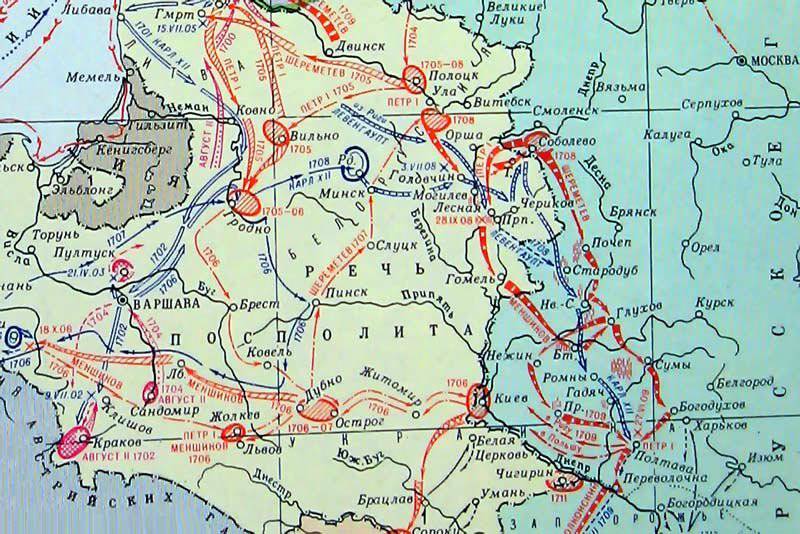
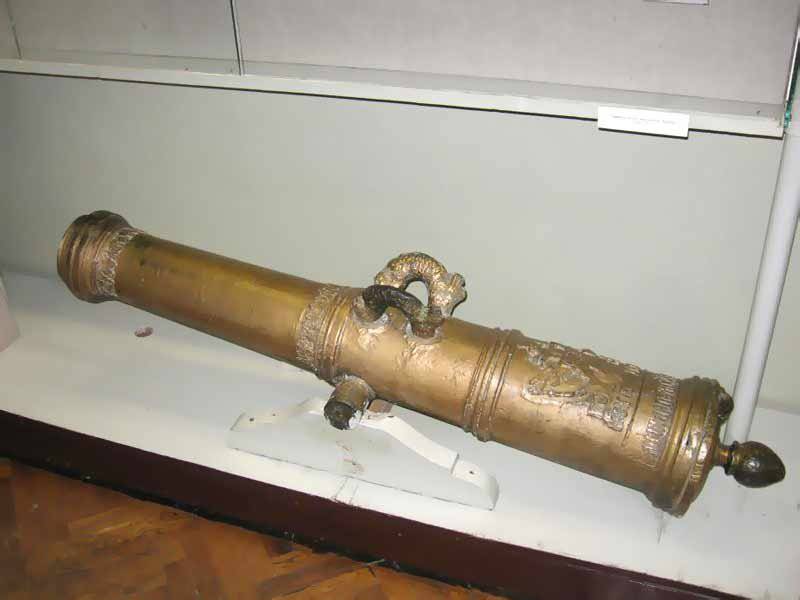
Swedish cannon.
Battle
On the morning of September 28 (October 9), Peter's forces crossed over the bridges across the Restra, which were built at night, and moved towards Lesnaya. Löwenhaupt placed his troops in a linear order to the north and north-west of the village of Lesnoy: on the northern shore of the swampy river Lisnyanka, the main forces were stationary at low altitudes, and a fortified camp (Wagenburg) was built from the rear of the wagons. Before the main forces, a squad of battalions from the 6 was deployed. Levengaupt made a number of important tactical mistakes: the most important left flank — he covered the road to Propoisk, was poorly covered and defended, and besides, the wagenburg poorly covered the road to a possible retreat.
Peter was going with a part of the forces to bypass the left flank of the enemy and, taking advantage of the presence of two roads, divided the army into two columns, almost equal in strength. Right - Semenov and Preobrazhensky Guards regiments, the battalion 1 and 3 Astrakhan regiment Dragoons, led by the king himself, the left - 1 Infantry Regiment (Ingermanland), 6 dragoon and "Life regiment," Menshikov, under his own command. The corps, after passing 2-3 km, approached the woods, where the advanced Swedish detachment sat down (its presence was missed), advanced out into the clearing - the soldiers began to dismount and line up in battle formations. The Russian troops failed to complete the deployment: the Swedish vanguard suddenly attacked the nearest left column, of which only one infantry and one dragoon regiment had time to turn around. Two regiments, bearing losses, steadfastly restrained the Swedes, closing the road filled with other troops. The Swedes, taking advantage of the advantage in their favor in this sector, began to cover the left Russian column from the right flank, the situation was dangerous. Peter moved to the aid of the advanced regiments of the left flank, his warheads - the Semenov regiment went on the attack.
The Swedes withstood the attack and continued their maneuver. But the Russian command used the time gain created by the attack of the Semenov regiment to transfer the 4 battalion of the Preobrazhensky and Astrakhan regiments. The approach of the new Russian forces stunned the enemy, the Swedes did not accept the battle and retreated to the woods, but they were knocked out from there. As a result, the first fight ended with the victory of the Russian army, the corps of Peter was able to begin deployment to attack the main forces of the enemy.
Russian troops were built in two lines: the first line - 8 infantry battalions in the center, on the 2 dragoon regiment on the flanks; the second, the 6 Dragoon Regiments and the 2 Infantry Battalion, the flanks reinforced with several grenadier companies. Within an hour, Russian troops attacked the main Swedish forces. The Swedish troops tried their best to restrain the onslaught of the Russian regiments, a fierce battle lasted up to 15 hours. But the enemy could not resist the bayonet attack and retreated to the wagenburg. The Swedes suffered heavy losses in manpower, lost 8 guns and several flags.
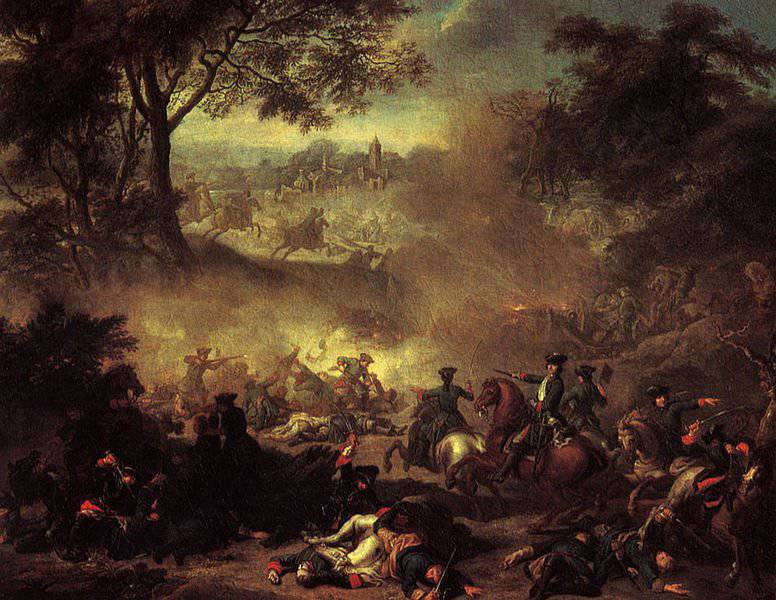
"The Battle of Forest". Jean-Marc Nattier, 1717
In the battle, there was a two-hour pause — Peter was awaiting Bour's detachment, and Levengaupt, his vanguard, who had gone to Proposk with part of the convoy. At about 17 hours, the 5-thousandth dragoon detachment of Bour arrived in time and took up a position at the nearest left wing of the Russian corps. Peter threw the 2 Dragoon Regiment on the right wing and delivered the main attack on the left flank of the Swedes. With swift onslaught, the Russians throw away the Swedes and occupy a bridge across the Lesnyanka River on the road to Propoisk. Now you can completely destroy the Swedish corps. At this critical moment for the Swedish forces, their squad arrived earlier sent to Propoisk. The Swedes were able to repel the bridge, but their combat capabilities were broken, they could not continue the fight. Heavy snowstorm and twilight stopped the battle for the 19 watch.
The Russian command supposed to resume the battle the next day. Levengaupt, given the fact that almost half of his corps was exterminated by the Russians, and a further battle threatened with complete annihilation, decided to retreat. At night, under the cover of campfires, the Swedes abandoned the remaining cannons and the wagon train, moved to Propoisk. In the morning, Peter ordered the cavalry under the command of Pflug to pursue the enemy. The Russian cavalry dispersed the rear-guard of the Swedes. Lewengaupt threw the second part of the wagon train (part of the supplies was destroyed), put the infantry on horses and retreated with the remnants of the corps to Seversk land, where in two weeks he connected with Karl.
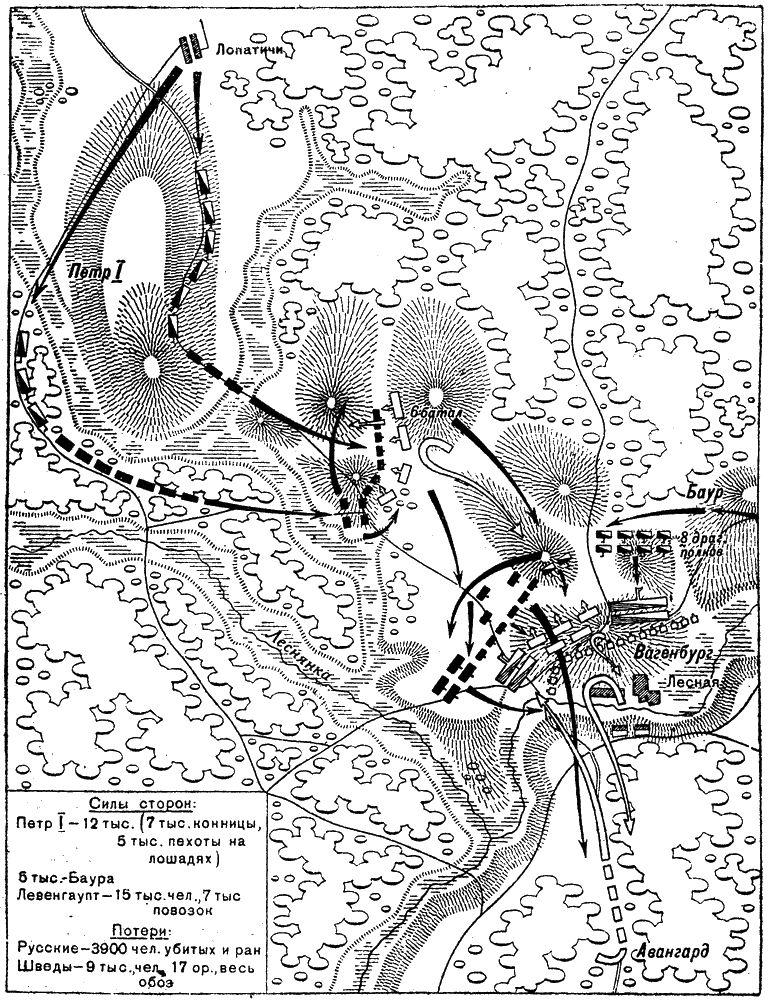
Battle of Forest.
The outcome and significance of the battle
- The Swedes lost 8-9 thousand people killed and wounded, more than seven hundred were captured. The Russian corps captured all the artillery, the 44 banner and almost the entire train. Peter's army lost about 4 thousand killed and wounded.
- It was the first major victory of the Russian army over the Swedish. Particularly noteworthy is that Peter attacked more numerous enemy forces (before the arrival of Bour's squad at the final stage of the battle). The Russian command well used the low mobility of the Swedish corps, acted actively, bravely, seized the initiative in their hands, correctly chose the enemy’s most vulnerable position - the left flank. But there were mistakes - poorly organized reconnaissance and ran into a sudden attack by the Swedish vanguard, did not pursue the defeated Levengaupt corps with all the cavalry, although they could completely destroy it.
- This victory seriously raised the morale of the Russian army.
- No more than 6-7 of thousands of exhausted soldiers joined the army of the Swedish king, this could not seriously strengthen the forces of Charles. The loss of huge food and combat supplies seriously complicated the situation for the Swedish command and became one of the prerequisites for the victory at Poltava.
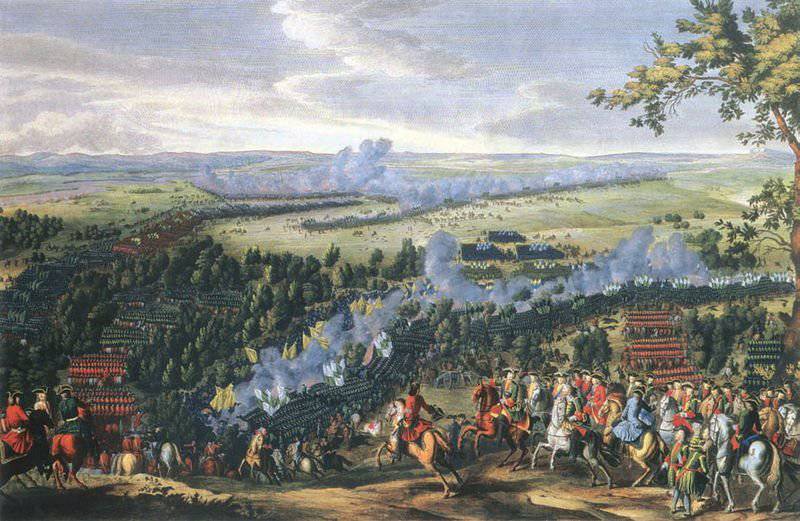
Battle of Forest. The engraving by N. Larmsensen, by artist P.D. Marten Jr., 1722 – 1724
Information